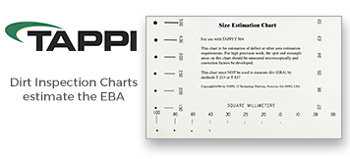 Search
Search
Use the search bar or filters below to find any TAPPI product or publication.
Filters
Content Type
Publications
Level of Knowledge
Collections
Journal articles

Magazine articles

Continuous digester rapid thinning, TAPPI Journal June 2024
ABSTRACT: Carbon steel continuous digesters built after the early 1980s are fully stress relieved, so stress corrosion cracking has been less of a concern. However, these newer digesters were designed to run modified cooking processes that have turned out to be much more corrosive than those running with conventional cooking. This corrosion is mainly associated with softwood digesters and appears to be flow related. Average corrosion rates of 40 mil/year are possible on the exposed shell between the wash and extraction screens. The corrosion patterns are visually distinct from surfaces in the upper digester and below the wash screens. This paper goes into practical detail on where it occurs, the causes, visual identification, inspection planning and results evaluation, and finally, how to mitigate this damage, which consists of applying a corrosion resistant barrier. Some discussion on dealing with general corrosion throughout the digester is included.
Journal articles

Magazine articles

Experiments and visualization of sprays from beer can and turbo liquor nozzles, TAPPI Journal February 2022
ABSTRACT: Industrial scale swirl-type black liquor nozzles were studied using water as the test fluid. Simple water spraying experiments were found to be very beneficial for studying and comparing nozzles for black liquor spraying. These kinds of experiments are important for finding better nozzle designs. Three nozzle designs were investigated to understand the functional differences between these nozzles. The pressure loss of nozzle 1 (“tangential swirl”) and nozzle 3 (“turbo”) were 97% and 38% higher compared to nozzle 2 (“tan-gential swirl”). Spray opening angles were 75°, 60°, and 35° for nozzles 1, 2, and 3, respectively. Video imaging showed that the nozzles produced sprays that were inclined a few degrees from the nozzle centerline. Spray patter-nation showed all the sprays to be asymmetric, while nozzle 2 was the most symmetric. Laser-Doppler measure-ments showed large differences in spray velocities between nozzles. The spray velocity for nozzle 1 increased from 9 m/s to 15 m/s when the flow rate was increased from 1.5 L/s to 2.5 L/s. The resulting velocity increase for nozzle 2 was from 7 m/s to 11 m/s, and for nozzle 3, it was from 8 m/s to 13 m/s. Tangential flow (swirl) directed the spray 6°–12° away from the vertical plane. Liquid sheet breakup mechanisms and lengths were estimated by analyzing high speed video images. The liquid sheet breakup mechanism for nozzle 1 was estimated to be wave formation, and the sheet length was estimated to be about 10 cm. Sheet breakup mechanisms for nozzle 2 were wave formation and sheet perforation, and the sheet length was about 20 cm. Nozzle 3 was not supposed to form a liquid sheet. Nozzle geometry was found to greatly affect spray characteristics.
Journal articles

Magazine articles

Displacement washing of softwood pulp cooked to various levels of residual lignin content, TAPPI Journal September 2021
ABSTRACT: This study investigates the influence of the degree of delignification of kraft spruce pulp cooked at seven different kappa numbers, ranging from 18.1 to 50.1, on the efficiency of displacement washing under laboratory conditions. Although the pulp bed is a polydispersive and heterogeneous system, the correlation dependence of the wash yield and bed efficiency on the Péclet number and the kappa number of the pulp showed that washing efficiency increased not only with an increasing Péclet number, but also with an increasing kappa number. The linear dependence between the mean residence time of the solute lignin in the bed and the space time, which reflects the residence time of the wash liquid in the pulp bed, was found for all levels of the kappa number. Washing also reduced the kappa number and the residual lignin content in the pulp fibers.
Journal articles

Magazine articles

Fundamental molecular characterization and comparison of the O, D0, and E stage effluents from hardwood pulp bleaching, TAPPI Journal 2019
ABSTRACT: The present study characterized effluents from the O, D0, and E stages using nuclear magnetic reso-nance (NMR) and gel permeation chromatography (GPC) techniques to better understand the chemical nature of the dissolved organics formed from the bleaching of a high-yield hardwood kraft pulp. Understanding the structures and molecular weight distribution of these organics is the first step in developing methods to mitigate these contam-inates in the discharged effluents. The results indicated that the molecular weight distribution (MWD) of the dis-solved organics from oxygen delignification effluent is broader than those from D0 and E stage effluents. In addition, the O stage filtrate contained considerable amounts of lignin and xylan fragments, which showed its efficiency in removing such materials. The effluent from the D0 stage contained a lower amount of high molecular weight frag-ments and a higher amount of low molecular weight fragments versus the O-stage filtrate. Aromatic structures were nearly absent in the D0 stage filtrate, but the degraded organic material, presumably from oxidized lignin, contained olefinic (C=C) and carbonyl (C=O) functional groups. Furthermore, higher molecular weight fragments were detected in the E-stage effluent, presumably due to the extensive solubilization and removal of the oxidized lignin generated from the D0 pulp.
Magazine articles

The use of oxidized white liquor as a caustic replacement in o, eo, eop, and e2 bleaching stages of kraft hardwood and softwood pulp, TAPPI JOURNAL, June 2000, Vol. 83(6)
The use of oxidized white liquor as a caustic replacement in o, eo, eop, and e2 bleaching stages of kraft hardwood and softwood pulp, TAPPI JOURNAL, June 2000, Vol. 83(6)
Magazine articles

A personal mount st. helens experience, TAPPI JOURNAL, May 2000, Vol. 83(5)
A personal mount st. helens experience, TAPPI JOURNAL, May 2000, Vol. 83(5)
Magazine articles

Continuous dust measurement as an indication of sootblowing performance in a recovery boiler, TAPPI JOURNAL, May 2001, Vol. 84(5)
Continuous dust measurement as an indication of sootblowing performance in a recovery boiler, TAPPI JOURNAL, May 2001, Vol. 84(5)
Magazine articles

Treatment efficiency of eucalypt kraft pulp bleaching effluents: influence of dissolved organic matter, SOLUTIONS! & TAPPI JOURNAL, April 2002 (128KB)
Treatment efficiency of eucalypt kraft pulp bleaching effluents: influence of dissolved organic matter, SOLUTIONS! & TAPPI JOURNAL, April 2002 (128KB)
Journal articles

Magazine articles

Editorial: Special pulping and engineering issues of TAPPI Journal yield important recovery cycle research, TAPPI Journal June 2024
ABSTRACT: The June issue of TAPPI Journal, which is dominated by recovery cycle topics, is the last PEERS issue organized by Dr. Peter Hart, the former editor-in-chief who passed away this past May. Peter, who was heavily involved with TAPPI’s Pulp Manufacture Division and various pulping-related committees, also started working with conference technical program planning starting in 2005 with the Engineering, Pulping and Environmental (EPE) Conference, which was the precursor to the more recent Pulping, Engineering, Environmental, Recycling and Sustainability (PEERS) Conference. He was also involved with other conference planning, including that for the International Pulp Bleaching Conference. In addition, Peter was a yearly attendee of such conferences starting as far back as 1990.
Journal articles

Magazine articles

Factors affecting deposit formation in foul condensate stripping systems, TAPPI Journal June 2024
ABSTRACT: In kraft pulp mills, foul condensates are often steam-stripped to produce clean condensate for use as process water. The formation of organic deposits in the stripped condensate is a common problem. A systematic study was conducted to examine the deposit composition and the most likely operating parameters responsible for stripped condensate contamination experienced at a kraft mill in Brazil. Daily averaged data of 170 operating parameters over a 15-month period were analyzed by means of multivariate discriminant analysis and random forest classification analysis. The results showed that the deposit formation is related to high temperature, pressure, and dry solids operations in various evaporator effects. These conditions, combined with the poor demisting efficiency in these effects, may have increased black liquor carryover mist in the vapor. Deposit formation also appeared to be related to increased throughput of the foul condensate stripping system and increased pressure in the stripper. Results of Fourier transform infrared spectroscopy (FTIR) and pyrolysis-gas chromatography mass spectrometry (Py-GCMS) analyses show that the deposit consists of mostly organic matter that likely originated from wood extractives and lignin.





